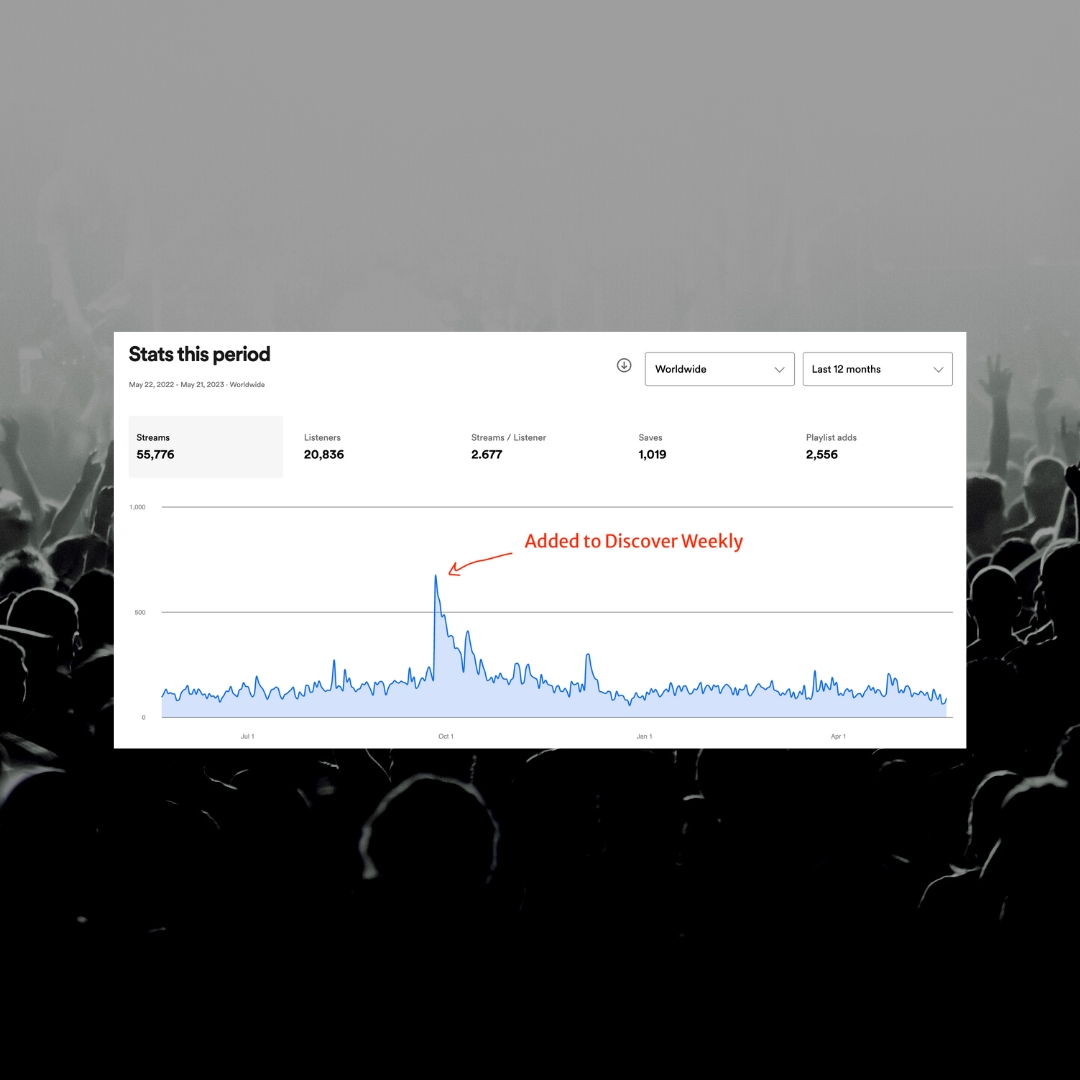What does it mean to “trigger the algorithm” on Spotify? And how can you trigger it?
What great, important questions!
But if you’re reading this post and expecting me to give you a couple of clear, two-to-three-sentence, data-backed answers to them…
Well, I’m sorry to say that I’m about to disappoint you, just as I’ve disappointed so many others over the course of my 30 years on this planet: by beating around the bush and waffling on anything absolute.
(I would be a great politician, right? Or an awful one. I can’t decide. And yes I’m aware that this illustrates my above point.)
I’d like to provide you with a simple answer – to say something like, “Oh, you trigger the Spotify algorithm if you throw salt over your left shoulder at the exact moment that your song reaches a popularity score of 42!”
But I can’t, because a) I’m 60% sure that salt has nothing to do with it, and b) I have to confess that I’m not much of a “numbers person.”
Sorry. I’m going to take a shot at answering those questions, anyway.
First one first:
“Triggering the algorithm” is a vague term that generally just means Spotify has started to include your music in more algorithmic playlists.
Maybe somebody out there has a clearer definition than that, but I haven’t heard it.
Most often, algorithmic traction starts with streams from “Radio” playlists. For example, here’s a release I’ve been working on:
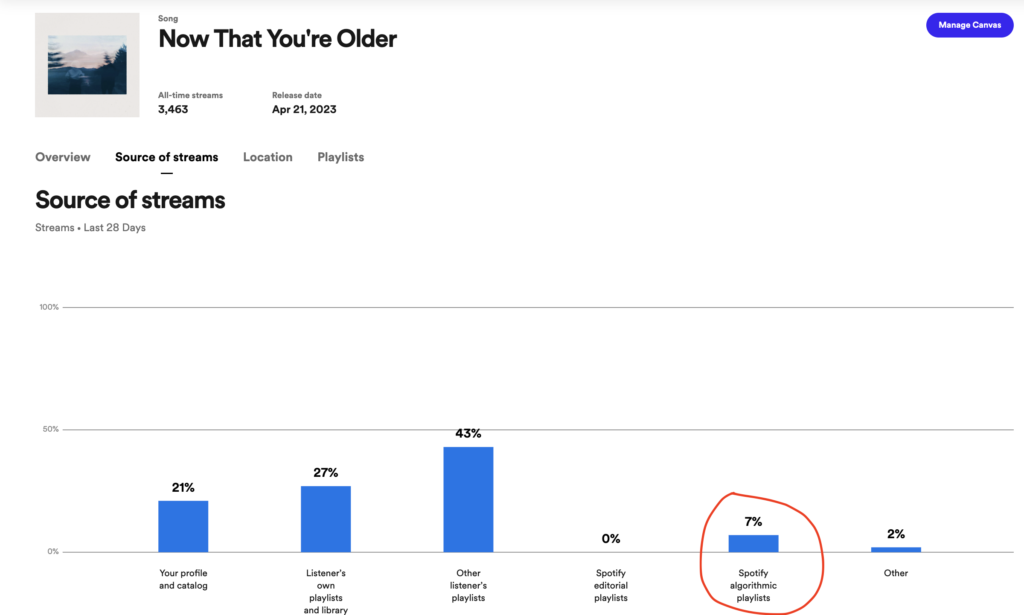

Honestly, 7% of streams coming from algorithmic playlists is kind of abysmal. If Spotify likes your music at all, you should find yourself sitting much higher than that.
In my experience, 30% is a good baseline, and once you’re really established, you can expect to get over 50% without too much trouble.
For example, here’s a new release from an artist with 200k+ monthly listeners:
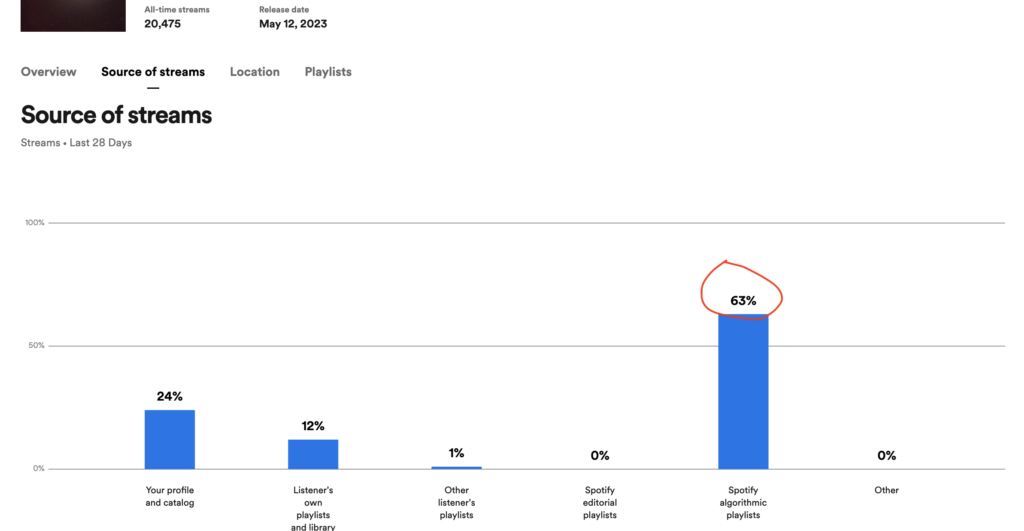
63% of streams from algorithmic playlists is also kind of ridiculous. You only get that kind of traction if Spotify has you figured out, and you only maintain it if you don’t do any other sort of promotion to drive streams.
To return to my first example: “Now That You’re Older” was the artist’s first release, so it kind of makes sense that Spotify doesn’t know who to show it to yet. And things are improving; although we’ve only had 148 “Radio” streams so far, most of those have come over the past couple of weeks, and I expect that number to rise significantly over the next month.
My point in all of this is that, if you drive legitimate streams, “Radio” streams will almost certainly be the first algorithmic bump to follow.
But that’s not really “triggering the algorithm,” in my opinion.
If I had to pick one playlist to represent an algorithmic trigger point, I’d go with “Discover Weekly.”
“Discover Weekly” is Spotify’s attempt at putting your music in front of a bunch of new ears. Basically, if you get boosted by this, it’s a clear sign that the algorithm thinks it has you figured out.
Remember, Spotify wants to show people music they will probably like. If they choose your song for that, it means they think a) your song is likable, and b) they know who will like it.
So this is a good thing. Here’s what it looks like:
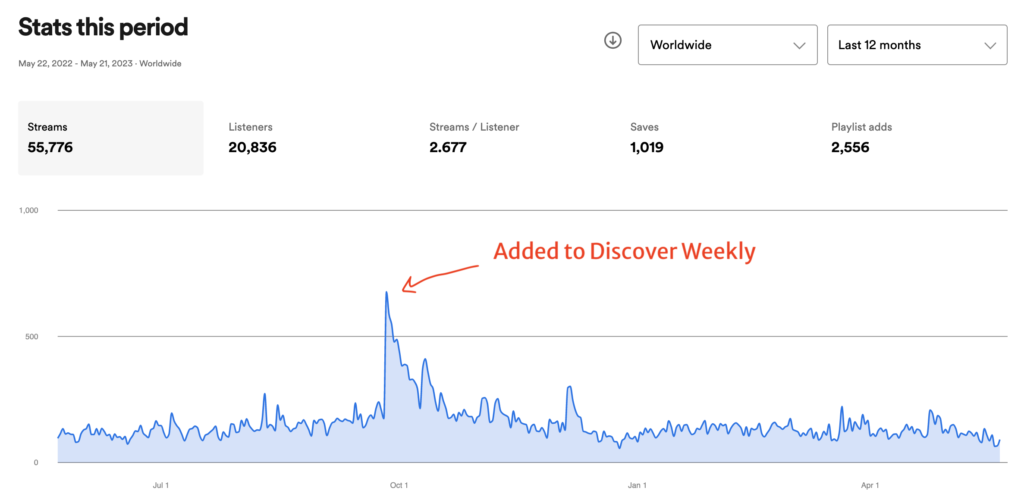

This song has been included on 4,871 playlists, but “Discover Weekly” is its all-time top source of streams, even though, as you can see, the placement was short-lived.
Takeaway: “Discover Weekly” is important.
But despite its importance (and here’s where I waffle again), “Discover Weekly” is just one data point.
For example, check out this list of the top playlists for a song with around 1.5M streams and look at just how much “Radio” is outplaying everything else.
This track has been racking up “Radio” plays for as long as its been out, so it’s hard to argue that “Discover Weekly” functioned as some sort of critical juncture.
And at this point I’ve kind of lost my thread of thought, so let’s just jump to the second question.
How do you “trigger” the algorithm?
This is where I feel even more that I should have some concrete answer, or at least some ability to point to a set of factors and say, “If this, then that.”
E.g., “If you reach a popularity score of X, you will get added to ‘Discover Weekly’ playlists.”
Or, “If you get 50,000 streams with a streams / listeners ratio of >2, you will get a certain number or ‘Radio’ streams.”
I guess there must be calculations like these built into the algorithm, but I think they’re probably much more complex and subject to change than most of us would like them to be – although maybe that’s a copout. Again, I’m not a numbers guy, and I’ve never been able to nail anything like this down.
All I can do, really, is speak in anecdotes or generalities.
Anecdote: I ran Facebook ads to a song for about one month, and the next month the song was added to “Discover Weekly” playlists.
Generality: Usually when you run a decent playlisting campaign, you will get a bump in “Radio” streams.
Anecdote: The first song my friend released to his profile only got 7% of its streams from algorithmic playlists in its first month.
Generality: The more algorithmic traction you get, the more likely you are to get algorithmic traction in the future.
I’m losing the thread again, so let me try to boil things down.
Three thoughts on all of this:
First, I think that getting into the good graces of Spotify’s algorithm clearly matters, because the algorithm can get your music into a lot of new ears. This probably goes without saying, but you should not pursue empty streams.
Second, I think it’s obvious that, regardless of exactly how the algorithm works, it is true that good streams lead to more good streams. If you can find a way to show your music to people who will probably like it, then Spotify will slowly learn the type of people who will probably like your music and show it to more of them.
Third, as I wrote last week, getting into more ears is only one part of this whole process – and it’s certainly not the end goal. The end goal is to build relationships.
With that in mind, I’ll show you a couple of final graphs, featuring one of my own songs:
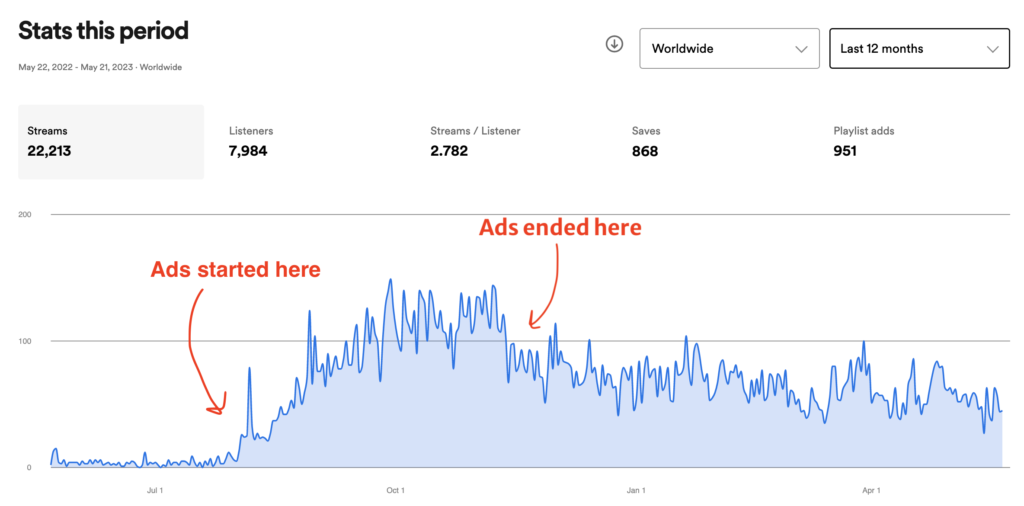
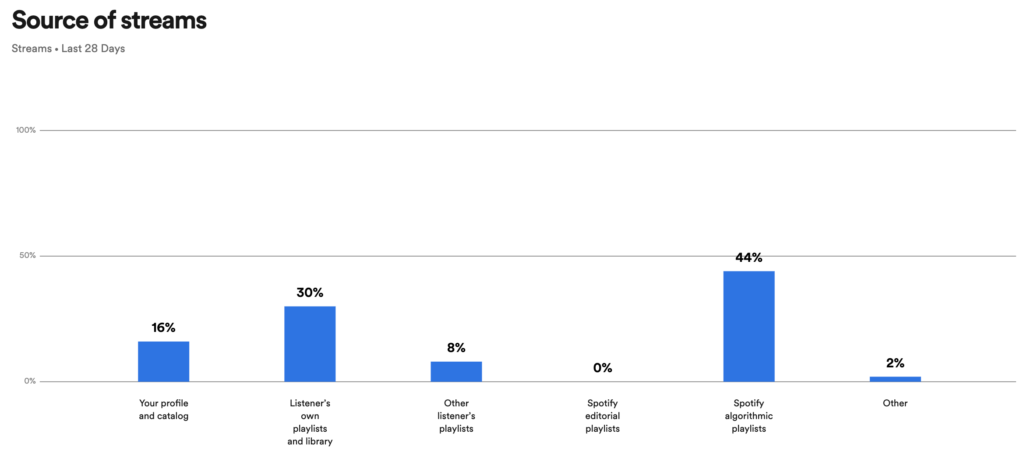
The ad campaign represented up there is the one I created to teach my course on Spotify growth. It showed my song to new ears for about six months. It never “triggered the algorithm” – at least, there was no definitive spike. Eventually, I paused it.
And some people kept listening.
You can see from the second graph up there that 30% of the streams I’ve gotten in the last month are from “Listener’s own playlists and library.”
In other words, a significant segment of the people listening to this song are doing so not because it’s being pushed in front of their face, but because they like it.
I don’t think my song is really a success story; it’s only got like 20,000 streams.
But I do think maybe the whole idea of “triggering the algorithm” is flawed. Maybe your goal on Spotify shouldn’t be to get some big “Discover Weekly” spike all at once, or to hit some mythical inflection point that signifies you’ve finally arrived. Maybe those are false summits.
Maybe the goal should just be to steadily, step-by-step, build a community of people who care about your music, algorithm be damned.
But I don’t know. I’m a waffler.
Thanks for reading, anyway.

